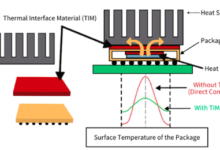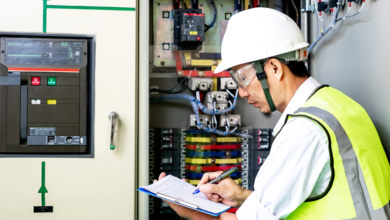Metal Mastery: A Comprehensive Guide to Steel 3D Printers and Their Applications

Introduction
Steel 3D printing is revolutionizing the manufacturing industry, offering unprecedented opportunities for innovation, efficiency, and customization. From aerospace to medical applications, steel 3D printers are enabling the production of complex parts and prototypes that were previously impossible to create. This guide will delve into the intricacies of steel 3D printing, covering its benefits, applications, and best practices for maximizing its potential.
Understanding Steel 3D Printing
What is Steel 3D Printing?
Steel 3D printing is an additive manufacturing process that creates metal parts layer by layer using digital 3D models. This technology allows for the production of complex geometries and detailed designs that are difficult or impossible to achieve with traditional manufacturing methods.
History and Evolution of 3D Printing
The concept of 3D printing dates back to the 1980s, with the development of stereolithography (SLA). Over the decades, 3D printing has evolved to include various materials and techniques, with metal 3D printing emerging as a significant advancement in the 21st century. Steel 3D printing has since become a vital tool in industries requiring durable, high-strength parts.
Types of Steel Used in 3D Printing
Stainless Steel
Stainless steel is widely used in 3D printing due to its excellent corrosion resistance, strength, and versatility. It is ideal for producing parts that need to withstand harsh environments and maintain structural integrity over time.
Tool Steel
Tool steel is known for its hardness and resistance to abrasion, making it suitable for manufacturing tools and molds. It can withstand high temperatures and heavy loads, making it a preferred material for industrial applications.
Maraging Steel
Maraging steel is a high-strength steel alloy that combines toughness with ease of machinability. It is often used in aerospace and tooling applications where strength and precision are critical.
Key Technologies in Steel 3D Printing
Steel 3D printing technology has undergone significant evolution and innovation since its inception. Some key milestones in the evolution of steel 3D printers include
Direct Metal Laser Sintering (DMLS)
DMLS is a popular steel 3D printing technology that uses a laser to sinter powdered metal layer by layer, creating fully dense metal parts. It is known for its high precision and ability to produce complex geometries.
Selective Laser Melting (SLM)
SLM is similar to DMLS but involves melting the metal powder completely to form solid parts. This process produces parts with superior mechanical properties and is used for high-performance applications.
Once the first layer is formed, the build platform is lowered, and a new layer of steel powder is spread on top. The energy source or binding agent then fuses or binds the next layer of powder onto the previous layer, repeating the process until the entire part is built up layer by layer.
Electron Beam Melting (EBM)
EBM uses an electron beam to melt metal powder, layer by layer, in a vacuum environment. This technology is suitable for producing large parts with high mechanical strength and excellent material properties.
Benefits of Steel 3D Printing
Design Flexibility
Steel 3D printing allows designers to create intricate and complex parts that would be difficult or impossible to manufacture using traditional methods. This flexibility opens up new possibilities for innovation and customization.
Cost Efficiency
While the initial investment in 3D printing technology can be high, the ability to produce parts on-demand and reduce material waste makes steel 3D printing cost-effective in the long run. It also reduces the need for expensive tooling and molds.
Speed and Precision
Steel 3D printing enables rapid prototyping and production, significantly reducing lead times. The precision of 3D printing ensures high-quality parts with minimal post-processing required.
Common Applications of Steel 3D Printing
Aerospace
In the aerospace industry, steel 3D printing is used to produce lightweight, high-strength components such as engine parts, brackets, and airframe structures. The technology allows for the creation of parts with complex geometries that improve performance and reduce weight.
Automotive
Steel 3D printing is revolutionizing the automotive industry by enabling the production of custom parts, prototypes, and performance-enhancing components. It allows manufacturers to quickly iterate designs and produce parts that meet exact specifications.
Medical Devices
The medical industry benefits from steel 3D printing through the creation of custom implants, surgical instruments, and prosthetics. The ability to produce patient-specific parts enhances treatment outcomes and reduces recovery times.
Tooling and Prototyping
Steel 3D printing is widely used for creating tooling and prototypes in various industries. It allows for the rapid development and testing of new designs, reducing the time and cost associated with traditional manufacturing methods.
How to Choose the Right Steel 3D Printer
Assessing Your Needs
Determine your specific requirements, such as the type of parts you need to produce, the required material properties, and the desired production volume. Understanding your needs will help you choose the right 3D printer.
Comparing Printer Features
Evaluate the features of different 3D printers, such as build volume, resolution, speed, and compatibility with various steel alloys. Consider the printer’s ease of use, maintenance requirements, and support services.
Budget Considerations
Steel 3D printers come in a wide range of prices. Consider your budget and the potential return on investment. While high-end printers offer advanced features and capabilities, there are also cost-effective options that provide excellent performance.
Top Steel 3D Printers in the Market
EOS M 290
The EOS M 290 is a high-performance steel 3D printer known for its precision and reliability. It offers a large build volume and supports various metal powders, making it suitable for a wide range of applications.
SLM Solutions 500
SLM Solutions 500 is a robust 3D printer designed for industrial applications. It features multiple lasers for faster production and supports a wide range of metal materials, including stainless steel and tool steel.
Markforged Metal X
Markforged Metal X is an affordable and user-friendly steel 3D printer that uses a unique metal extrusion process. It is ideal for small to medium-sized businesses looking to adopt metal 3D printing without a significant upfront investment.
Designing for Steel 3D Printing
CAD Software Recommendations
Using the right CAD software is crucial for designing parts for steel 3D printing. Popular options include AutoCAD, SolidWorks, and Fusion 360, which offer tools for creating complex geometries and optimizing designs for additive manufacturing.
Design Tips and Tricks
Consider the limitations and capabilities of steel 3D printing when designing your parts. Use lattice structures to reduce weight, incorporate supports for overhangs, and ensure proper layer adhesion. Designing for manufacturability will enhance the quality and performance of your printed parts.
Common Design Challenges
Designing for steel 3D printing can present challenges such as warping, residual stresses, and support removal. Address these challenges by optimizing print settings, using appropriate support structures, and conducting thorough testing and validation.
Preparing Your Steel 3D Printer
Setup and Calibration
Proper setup and calibration are essential for achieving high-quality prints. Follow the manufacturer’s guidelines for installing and calibrating your 3D printer, including bed leveling, laser alignment, and material handling.
Material Handling and Safety
Handling metal powders requires strict safety protocols to prevent exposure and contamination. Use appropriate personal protective equipment (PPE), ensure proper ventilation, and follow guidelines for storing and handling metal powders.
Maintenance Practices
Regular maintenance is crucial for the longevity and performance of your steel 3D printer. Perform routine checks, clean the machine components, and replace worn parts as needed to ensure consistent print quality.
Printing Process and Techniques
Layer-by-Layer Printing
Steel 3D printing builds parts layer by layer, with each layer being fused or sintered together. Understanding the layer-by-layer process helps in optimizing print settings and achieving desired material properties.
Post-Processing Methods
Post-processing is often required to achieve the final desired properties of 3D printed parts. Common methods include heat treatment, surface finishing, and machining to enhance strength, appearance, and dimensional accuracy.
Quality Control Measures
Implementing quality control measures is essential for ensuring the reliability and performance of 3D printed parts. Use inspection techniques such as X-ray CT scanning, dimensional analysis, and mechanical testing to verify part quality.
Case Studies: Success Stories with Steel 3D Printing
Innovative Aerospace Components
A leading aerospace company used steel 3D printing to create a lightweight, high-strength bracket for an aircraft. The new design reduced weight by 30% and improved fuel efficiency, showcasing the potential of additive manufacturing in aerospace.
Custom Automotive Parts
An automotive manufacturer adopted steel 3D printing to produce custom exhaust components. The ability to quickly iterate designs and produce small batches enabled the company to enhance performance and reduce time to market.
Life-Saving Medical Implants
A medical device company utilized steel 3D printing to create patient-specific implants for complex surgeries. The custom implants improved surgical outcomes and reduced recovery times, demonstrating the life-changing impact of 3D printing technology.
Emerging Trends in Steel 3D Printing
Hybrid Manufacturing
Hybrid manufacturing combines additive and subtractive processes to achieve optimal results. This approach leverages the strengths of both technologies, enabling the production of complex parts with high precision and surface finish.
Sustainable Practices
Sustainability is becoming increasingly important in manufacturing. Steel 3D printing contributes to sustainability by reducing material waste, enabling lightweight designs, and supporting the use of recycled materials.
Advances in Printing Speed and Precision
Ongoing research and development are leading to advances in 3D printing speed and precision. Innovations such as multi-laser systems, improved scanning strategies, and real-time monitoring are enhancing the capabilities of steel 3D printers.
FAQs About Steel 3D Printing
How durable are 3D printed steel parts?
3D printed steel parts are highly durable and can match or exceed the strength of traditionally manufactured parts, depending on the printing technology and post-processing methods used.
Can steel 3D printing be used for mass production?
While steel 3D printing is often used for prototyping and low-volume production, advancements in technology are making it increasingly viable for mass production, especially for complex and customized parts.
What are the limitations of steel 3D printing?
Limitations include high initial costs, longer production times for large parts, and the need for post-processing to achieve final properties. However, these challenges are being addressed with ongoing technological advancements.
How does steel 3D printing compare to traditional manufacturing?
Steel 3D printing offers greater design flexibility, reduced material waste, and shorter lead times compared to traditional manufacturing. However, it may not always be cost-effective for high-volume production of simple parts.
What industries benefit most from steel 3D printing?
Industries such as aerospace, automotive, medical, and tooling benefit significantly from steel 3D printing due to its ability to produce complex, high-performance parts with tailored properties.
What are the costs associated with steel 3D printing?
Costs include the initial investment in a 3D printer, materials, maintenance, and post-processing. While the upfront costs can be high, the long-term benefits often justify the investment.
Conclusion
Steel 3D printing is a transformative technology that offers unparalleled opportunities for innovation and efficiency in manufacturing. By understanding the benefits, applications, and best practices, businesses can leverage steel 3D printing to achieve new levels of performance and competitiveness. Whether you’re in aerospace, automotive, medical, or any other industry, exploring the potential of steel 3D printing can lead to groundbreaking advancements and success.






